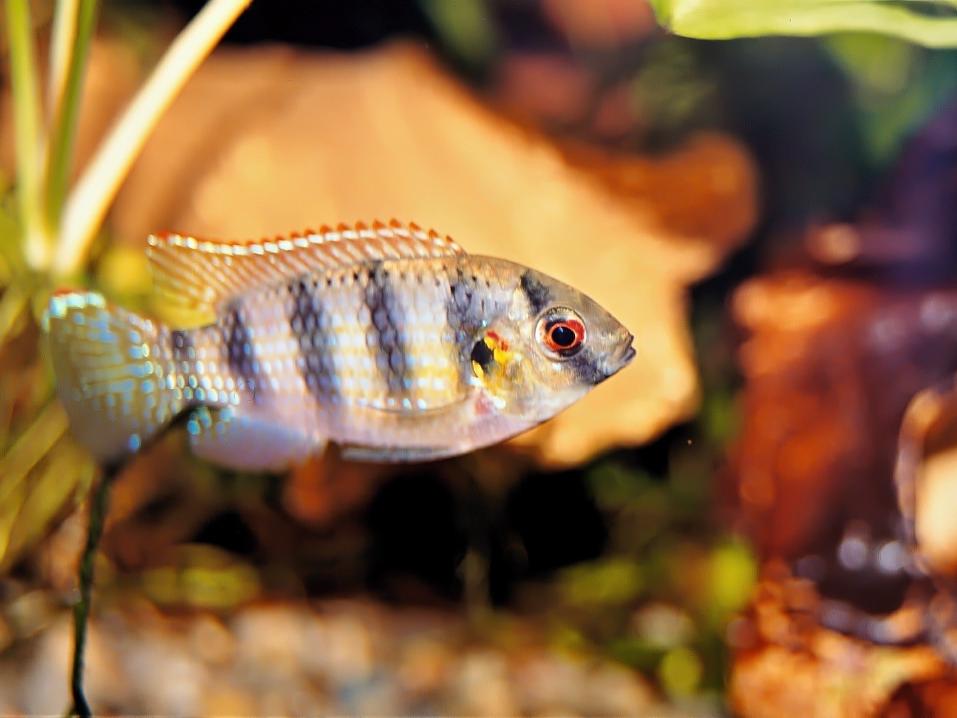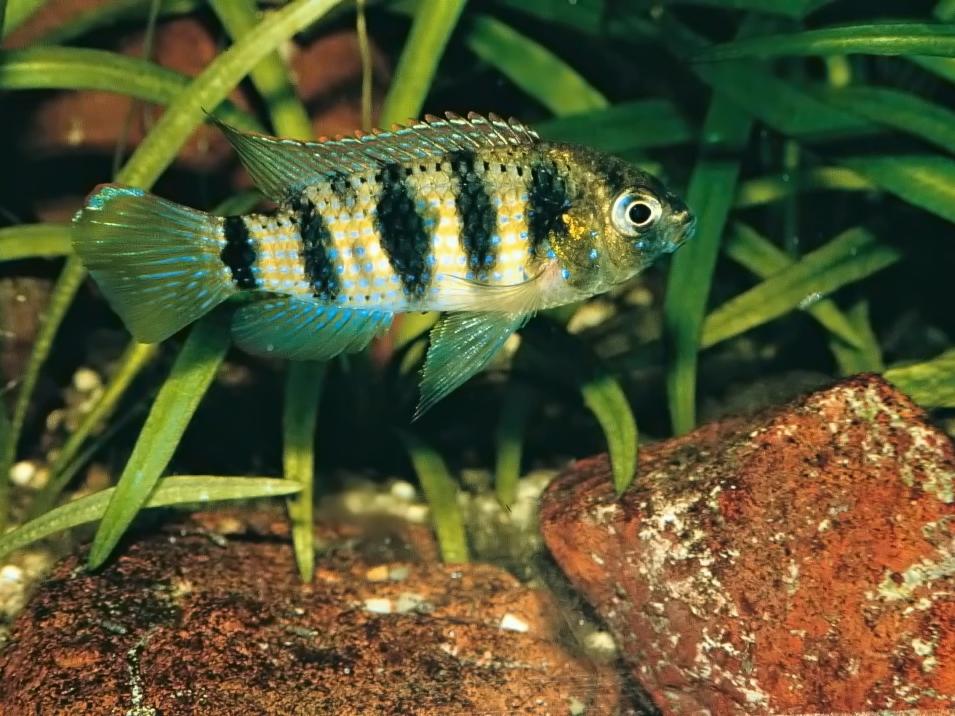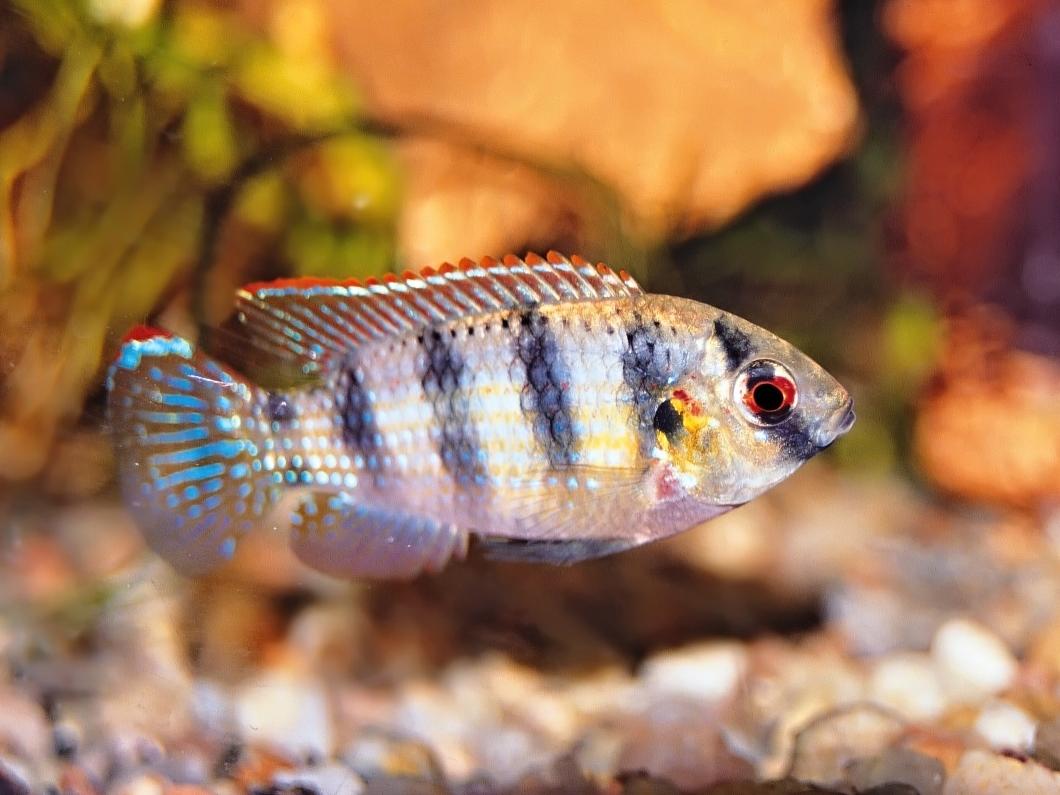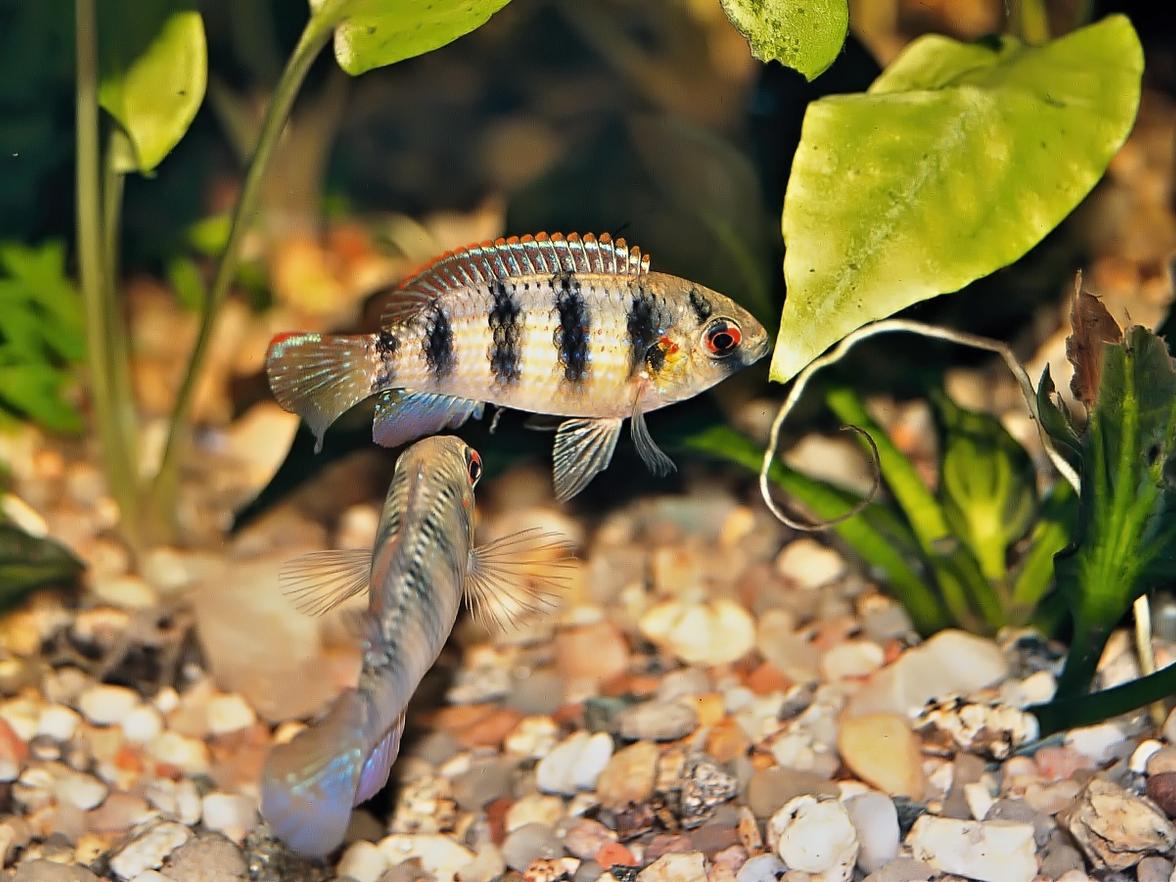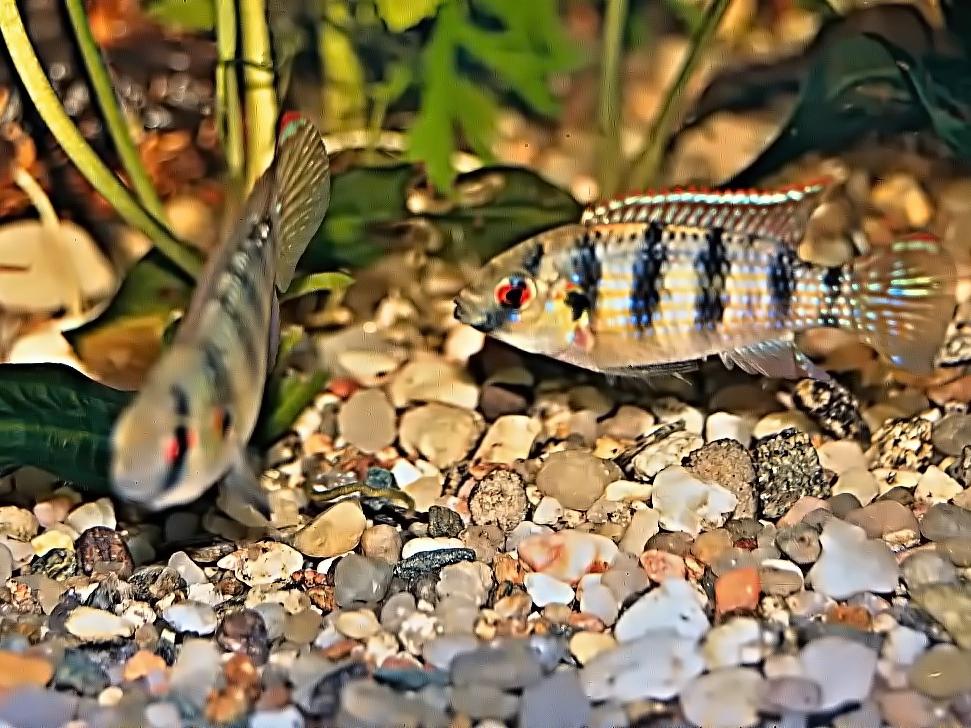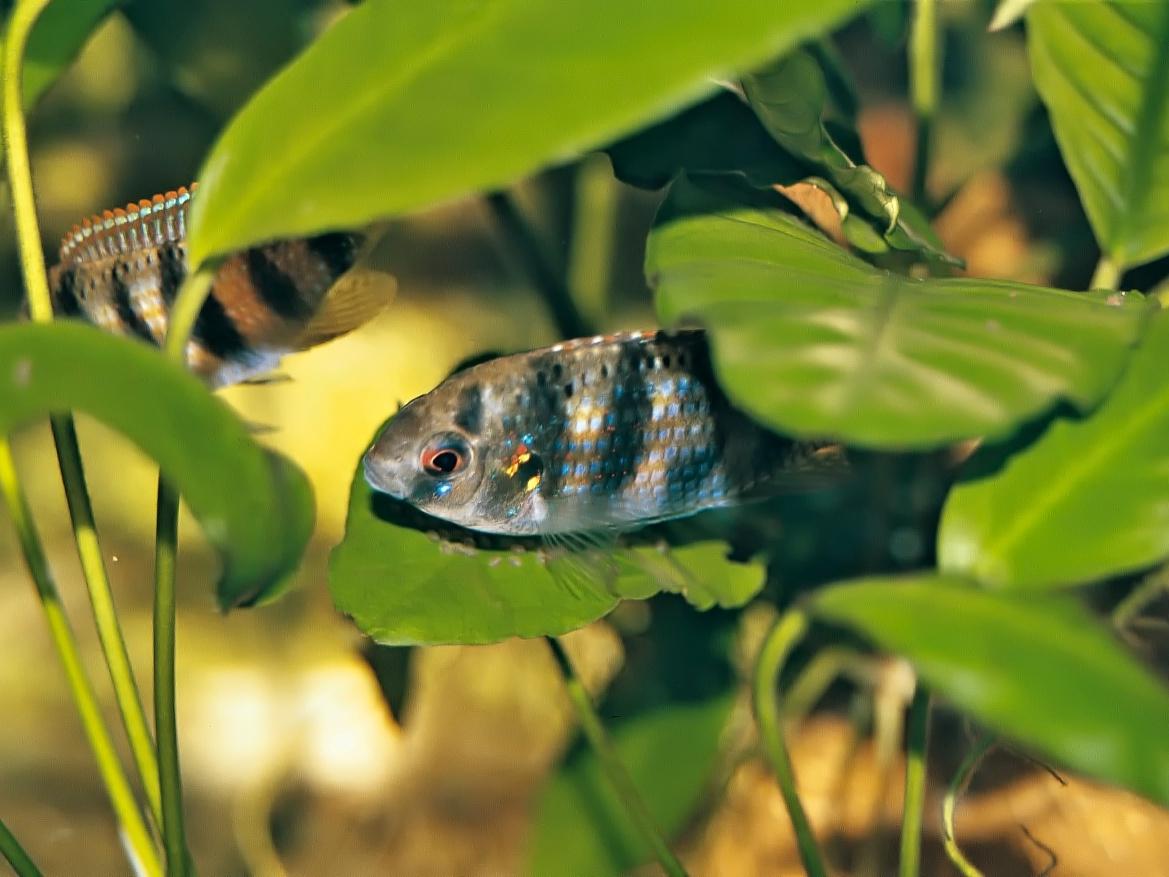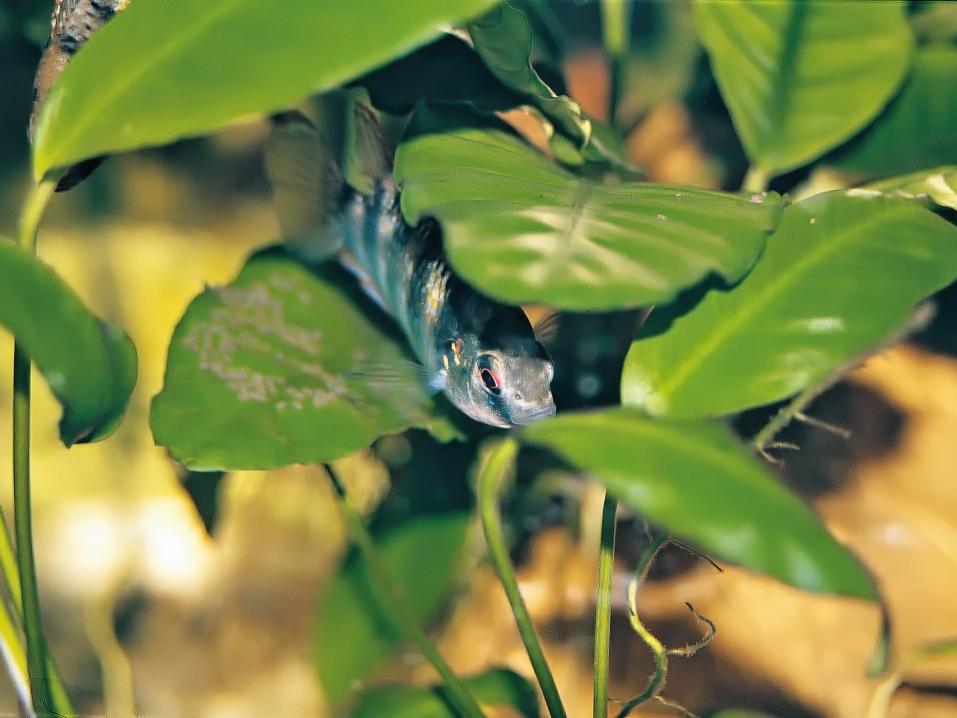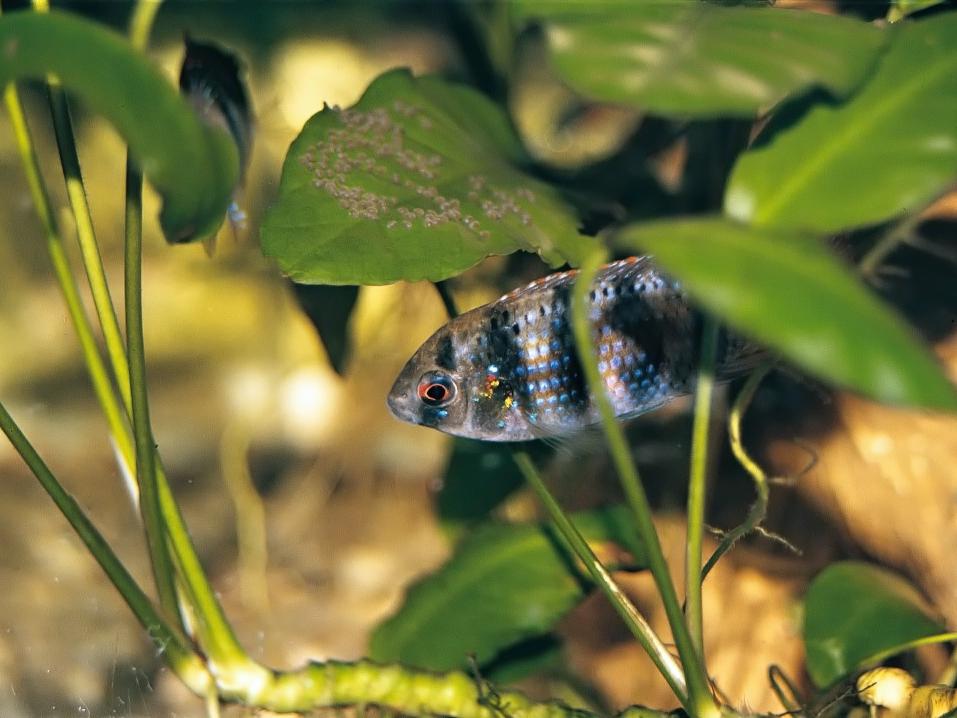From African rivers, full of mysteries and unrest: Thomas's cichlid – an undemanding, peaceful, and exceptionally interesting fish for aquarists. Whether you are an experienced breeder or a novice "hobbyist," this article will reveal everything about its origin, breeding, rearing, and the peculiarities that make it an ideal choice for community aquariums. Get ready for this little cichlid from Guinea and Sierra Leone to enchant you with its parental care and beautiful colors!
Many beautiful fish of various families originate from African rivers, among which our aquarists are particularly captivated by cichlids alongside tetras.
A huge disadvantage is the constant unrest in some areas of the black continent, which is why the Congo River, in particular, hides many secrets. The fish that is already quite well known to us is Thomas's cichlid. The designation "Thomas's haplochromis" is also used in our literature, but cichlid enthusiasts tend to use this term more for representatives of the genus Pelmatochromis, Pelvicachromis and some others. Besides the basic form, a more colorful variant from Guinea has also spread among us. Perhaps the greatest advantage of this fish is the fact that they spawn on the substrate in open spaces, and both parents take care of the fry. This allows even completely ordinary aquarists to observe what is a mystery for most other aquarium fish. Breeding young in a community tank.
Homeland
This fish is favored by both specialized cichlid keepers and mainly by ordinary "hobbyists." A great advantage is its peacefulness and relatively manageable size. Although literature usually states larger sizes, in reality, males grow to 7-8 cm in aquariums, while females reach 6-6.5 cm (literature often states a maximum size of 10 cm for males and 7 cm for females).
They are fish that fit quite well into community aquariums of medium and larger sizes, alongside appropriately sized fish due to their peaceful nature. The known population of the basic variant most often comes from Sierra Leone and western Liberia, while the described "Guinea" variant lives, as the name suggests, in the waters of southeastern Guinea. Here, they usually inhabit smaller and slowly flowing forest streams with wide, well-oxygenated, soft, and slightly acidic water. Among others, they are accompanied by the well-known red jewel cichlids Hemichromis bimaculatus (now Rubitacochromis bimaculatus), as well as Hemichromis paynei (now Rubitacochromis payenei) and Pelvicachromis humilis. In our literature, we can also find fish under invalid synonyms such as Haplochromis thomasi, Hemichromis thomasi, Paratilapia thomasi, Pelmatochromis thomasi. The known populations most often come from Sierra Leone or Liberia.
Aquarists have known the fish relatively briefly
In 1998, fish of this species appeared in neighboring Austria, labeled as Anomalochromis thomasi "Guinea". They are slightly distinguishable from the well-known basic form by their striking striping and beautifully red-colored irises. I was one of the first aquarists to acquire them from my old friend Hans Gruber, whose inclination towards African fish is well known.
Beautiful specimens were placed in my 90-liter aquarium, where they were accompanied by Ramirezi cichlids and some smaller species of tetras. On the bottom of the aquarium, which was equipped with many hiding places, lived also the catfish Rineloricaria sp. "Rot" and Ancistrus sp. The tank was relatively densely planted with Anubias, which long reminded me of my last visit to my late friend Pavel Gabriel, and I also placed several roots in the tank that offered plenty of hiding spots.
Sex differentiation
As with most representatives of the "parent group of cichlids," that is, those species where both individuals care for the spawn and fry about equally, it is sometimes difficult to distinguish between males and females in Thomas's cichlids. In adults, males are somewhat larger, usually paler, while in the "Guinea" form, the developing and especially adult female stands out not only with her beautiful red eyes but also with a more intense coloration. When spawning, everything is simple; the female has not only a rounder and fuller belly but also a thicker and bluntly ended breeding papilla, while the male has a thinner and sharper one.
Simple breeding
Since I originally wanted to photograph the fish, I ordered three individuals, one male and two females. It was very interesting to observe their life behaviors until they matured, when they reached sexual maturity and both females began to show interest in spawning. The male always befriended the female with which he subsequently spawned, while both of these temporary partners then chased away the remaining female. However, two weeks later, the situation reversed when the male wanted to spawn with the other female, who was "ready" and well-prepared for spawning.
Spawns occurred with regular precision also because the fish were well-fed with quality plankton, occasionally with artemia nauplii, and I regularly added daphnia and bloodworms, both about once a week. Perhaps this is why they maintained very good condition throughout the time with beautiful coloration. The male constantly patrolled the tank, spreading his fins in front of his favorite female, while he pursued the other one, completely ignoring the other fish. The water in the tank was regular tap water, with a pH around 6.6-6.8, a temperature between 24-26 °C, and the water flow and its corresponding cleanliness were taken care of by an internal filter from Eheim that had been functioning for 10 years at that time.
Beware of small tetras
As a spawning substrate, the fish mostly used Anubias leaves, but I was sorry to trim these leaves to transfer the spawn to another tank. Moreover, I was captivated by the behavior of these small fish, which only grow to about 5-6 cm in the tank, yet both parents diligently care for the spawn and the hatched young.
Their biggest enemies were not so much the more robust and faster tetras Astyanax sp but mainly the common neon tetras Paracheirodon innesi and red neon tetras Paracheirodon axelrodi. These fish, due to their small size, apparently did not raise suspicion in the parents that they could harm the fry, so they could approach the spawn without fear, where they then discreetly nibbled one individual after another, until within two days the parents were left without fry. After a plea from friends, I removed a leaf with eggs that were light, about 1.5-2 mm in diameter, numbering about 300 pieces.
I placed the eggs in the usual way into a separate tank with gentle aeration, which ensured the supply of oxygenated water to the eggs and thus replaced the constant fanning of the spawn with the parents' fins. The water was the usual tap water from České Budějovice, filtered from the common aquarium with the same parameters. Hatching occurred at a temperature of about 26 °C within 2 days, and after they became free-swimming, the fry immediately accepted freshly hatched nauplii of smaller species of artemia without any problems.
The young are very voracious and grow well. A disadvantage of this species is that the young are initially such "gray mice" of the aquarium; their beautiful coloration appears much later. We mean that they are quite voracious, and to prevent biological calamities with subsequent outbreaks of various diseases during their intense metabolism, we do not forget regular water changes.
Breeding problems
Breeding is relatively easy; unfortunately, however, as with other representatives of the parent group, the fish must learn to care for the young. Sometimes the spawn is eaten during the first spawns, at other times smaller fish, and especially small tetras, will consume the spawn when the parents are busy with other, often unimportant matters.
Slides:
- Adult male of Thomas's cichlid, var. Guinea
- Young female does not yet have red-colored eyes.
- The male is always larger than the female, more robust.
- The female spawns with the male.
- The male displays to the female in all his beauty, the beginning of spawning.
- First, the female lays eggs on a plant leaf.
- The male fertilizes the eggs immediately.
- After spawning, one of the partners is constantly with the spawn.
